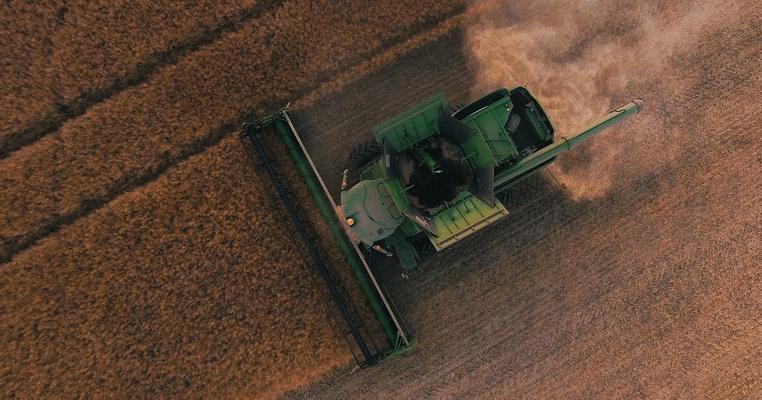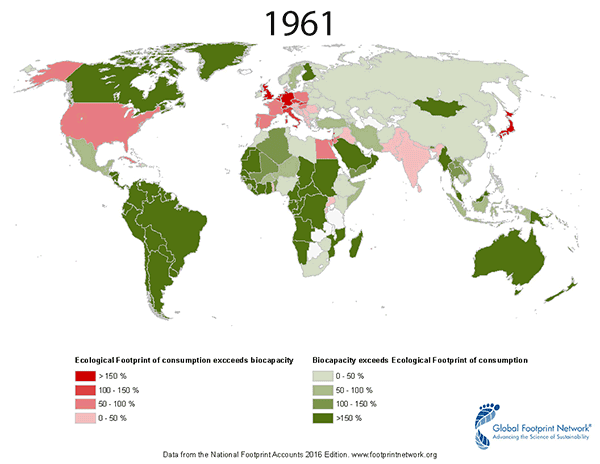
What’s Your Ecological Footprint?
At Climate Reality, we talk a lot about sustainability. But what does it really mean?
For the most part, it’s pretty straightforward. According to the US Environmental Protection Agency (EPA), “Sustainability is based on a simple principle: Everything that we need for our survival and well-being depends, either directly or indirectly, on our natural environment. To pursue sustainability is to create and maintain the conditions under which humans and nature can exist in productive harmony to support present and future generations.”
It’s what we do to manage change and maintain ecological balance, using our natural resources without depleting them. But the thing is, we’re not doing a very good job of it.
Talking about this issue admittedly can make people uncomfortable. But sometimes the tough conversations are the ones we need to have the most. And if we want younger generations growing up now to experience the same incredible Earth and have the same opportunities their parents did, we need to start talking about it now.
Especially because our friends at Global Footprint Network, an international research organization working to change the way the world measures and manages its natural resources, think we’re burning the candle at both ends.
They began investigating our full “Ecological Footprint” (more on that below). Troubled by what they found, they created Earth Overshoot Day to raise awareness of the pressing situation. In 2000, Earth Overshoot Day fell in very late September; this year, it’s set for August 1. That’s not good.
So what is Earth Overshoot Day and why does it matter? Read on to learn more, and find out what you can do to lower your own footprint and support a safe and sustainable future for the planet.
SOME RESOURCES ARE FINITE
Earth Overshoot Day marks the date each year when mankind’s demand for ecological resources exceeds what the planet can regenerate in that year. Right now, Global Footprint Network reports, we’re using 1.7 Earths worth of nature each year.
“The ‘Ecological Footprint’ measures how much nature we have — and compares it to how much nature we use,” says Mathis Wackernagel, founder and CEO of Global Footprint Network. “It’s like managing a farm. A farm produces crops, animals on its pasture, trees in its forests – that’s how much we have.
“The footprint measures how much farm it takes to produce what we consume, including everything we eat, all the fiber and timber we use, all the space to house our roads and buildings, and to absorb all our CO2 waste from burning fossil fuels. Using this idea, ecological footprint accounting tracks how much nature we have and how much nature we use for the world, countries, regions, cities, and even individuals.
“Our biggest farm is our planet. Yet, humanity currently demands over 70 percent more than what our planet regenerates. How is nature able to make up the difference? By depleting stocks: cutting timber faster than it regrows, emitting more CO2 than is absorbed, pumping more groundwater than is being recharged, etc. This business model only works so long — whether for farmers or for humanity as a whole.”
>> Ready to make a difference? Get the latest from Climate Reality. <<
The Global Footprint Network’s ecological footprint calculations attempt to take into account humanity’s entire impact, measuring demand for everything from veggies and livestock to timber and other wood products to space for urban infrastructure. The calculations also consider fossil fuels and the amount of forest needed to mitigate their carbon dioxide (CO2) emissions.
So by these metrics, things like overfishing exist in the same category as current CO2 emissions, with impacts that exceed what an ecosystem can supply or absorb. By looking at them together in this way, we get a more-complete picture of the resources we’re using – and what that means for the health of the planet.
This is sometimes also called biological capacity or biocapacity, and here’s what it looks like around the world: You’ll notice several countries are “in the red.” This means they use more natural resources in a year than their ecosystems can regenerate in that same time period. Their ecological footprint exceeds the region’s biocapacity, leading them to run an “ecological deficit.”
You’ll notice several countries are “in the red.” This means they use more natural resources in a year than their ecosystems can regenerate in that same time period. Their ecological footprint exceeds the region’s biocapacity, leading them to run an “ecological deficit.”
The countries in green enjoy what’s called an “ecological reserve,” meaning the country’s biocapacity is greater than its population’s footprint.
“At the global level, ecological deficit and overshoot are the same, since there is no net import of resources to the planet,” according to the Earth Overshoot Day website.
THE ANSWER IS RENEWABLE
One way to decrease the ecological footprint, push Earth Overshoot Day back more and more each year, and create new jobs and grow the economy is to invest in renewable energy.
Fossil fuels like coal, oil, and natural gas are finite resources formed in the earth over hundreds of millions of years from the remains of plants and animals. From the extraction of the resources themselves to the environmental/climate impacts of their emissions on other facets of the ecosystem, fossil fuels are a major player in any place’s footprint.
Renewable energy, on the other hand, is generated from ongoing natural processes that are not depleted when used. Unlike fossil fuels, these types of energy are theoretically unlimited, and (also unlike fossil fuels) they’re clean and release little to no global warming emissions into the atmosphere.
Renewables contribute very minimally (if at all) to a country, city, or town’s ecological footprint – potentially even flipping the script entirely in some places from ecological deficit to ecological reserve.
Here are three important sources of renewable energy:
- Wind – Wind power turns the kinetic energy in moving air currents into electricity using a simple technology known as a turbine. It’s actually pretty simple: The energy in wind turns the turbine’s blades, driving a generator to create electricity.
- Solar – Solar energy changes the energy of the sun’s rays into electricity or heat we can use. The photovoltaic cells that make up most solar panels convert the energy in sunlight to electricity.
- Geothermal – Geothermal energy comes from tapping into the intense heat energy contained in the rock and waters of the Earth's crust. We use this heat to create steam to drive turbines and generate electricity or heat and cool homes and other buildings.
It’s clear: The best way to create new jobs and grow the economy, fight climate change, and support a sustainable future for the planet is to invest in clean, renewable energy like wind, solar, and geothermal power.
>> Learn more: Download our (free) renewable energy fact sheet now. <<
GET YOUR FOOTPRINT – AND TAKE ACTION
Learn more about the impact you’re having on the world around you now by calculating your personal Earth Overshoot Day here. Then, take to social media using the hashtag #MoveTheDate to tell your networks what you’re doing to lessen your Ecological Footprint.
There are a number of things you can do to help #MoveTheDate. You can travel with an eco-sensibility, eat more greens and produce shop locally, carpool or ride your bike to work, or start a conversation with friends, family, and/or coworkers about sustainability and climate change.
Importantly, you can always challenge your leaders to take climate action to #MoveTheDate. Contact information for most local, state, and national representatives can be found on their respective websites, and you can always tag them in social media postings, letting your representatives know how you’re working to #MoveTheDate – and asking what they’re doing to move it too.

